Exploring Eco-Friendly Fabrics for Your Sewing Projects
In a world where sustainability is becoming increasingly crucial, the choice of fabric can significantly impact our environment. Eco-friendly fabrics are not just a trend; they represent a conscious decision to protect our planet while indulging in our passion for sewing. Imagine creating beautiful garments or home décor items that not only look good but also do good! This article delves into the fascinating world of sustainable fabrics, highlighting their benefits, types, and how they can enhance your sewing projects while promoting environmental responsibility.
So, what exactly qualifies as eco-friendly fabric? At its core, eco-friendly fabrics are made from sustainable materials that minimize environmental impact. This means they are often produced using organic farming methods, recycled materials, or innovative processes that reduce water and energy consumption. By choosing these fabrics, consumers can contribute to reducing pollution, conserving natural resources, and supporting ethical labor practices. It’s like giving Mother Earth a big hug every time you sew! Not only do these choices benefit the planet, but they also often result in higher-quality products that are healthier for us and the people who produce them.
With the growing demand for sustainable options, there are various types of eco-friendly fabrics available, each boasting unique properties that make them suitable for different sewing projects. Below are some popular choices:
- Organic Cotton: Soft, breathable, and grown without harmful chemicals.
- Hemp: Renowned for its strength, durability, and low environmental impact.
- Tencel: Made from sustainably sourced wood pulp, known for its luxurious feel.
Each of these fabrics can be the star of your next sewing project, whether you're crafting a comfy t-shirt or a stunning quilt. Let's dive deeper into some of these options!
Organic cotton is a fantastic choice for eco-conscious sewists. Grown without harmful pesticides or synthetic fertilizers, it not only protects the environment but also promotes better health for farmers. The softness and durability of organic cotton make it a favorite for clothing, bedding, and more. When you choose organic cotton, you’re not just selecting a fabric; you’re supporting a movement toward sustainable agriculture practices.
Choosing organic cotton comes with a plethora of benefits that extend beyond just the fabric itself. Here are some key advantages:
- Reduced Environmental Impact: Organic farming practices contribute to healthier ecosystems.
- Better Health for Farmers: Without exposure to toxic chemicals, farmers can work in safer conditions.
- Lower Carbon Footprint: Organic cotton typically requires less water and energy to produce.
Understanding these benefits can empower you to make informed fabric choices that align with your values.
The versatility of organic cotton is simply astounding. From clothing to home décor, the possibilities are endless! Here are some creative sewing projects that can utilize this sustainable fabric effectively:
- Fashion garments like dresses, shirts, and children’s clothing.
- Home textiles such as curtains, pillowcases, and quilts.
- Accessories like bags, hats, and baby items.
Using organic cotton not only enhances the quality of your projects but also allows you to share the story of sustainability with others.
Hemp fabric is another powerhouse in the realm of eco-friendly textiles. Known for its strength and durability, hemp is a fantastic choice for those looking to create long-lasting items. One of the most appealing aspects of hemp is its low water usage during cultivation, making it a sustainable option in regions where water is scarce. Additionally, hemp plants naturally resist pests, reducing the need for chemical pesticides.
The dyeing process can significantly impact the environment, often introducing harmful chemicals into our waterways. Therefore, selecting sustainable dyes is crucial for maintaining the eco-friendliness of your sewing projects. By opting for dyes that minimize pollution and are derived from natural sources, you can ensure that your beautiful creations are also kind to the planet.
Natural dyes, derived from plants and minerals, offer a sustainable alternative to synthetic dyes. They can add a unique touch to your projects, creating colors that are rich and vibrant. Plus, the process of dyeing with natural ingredients can be a fun and creative experience!
Low-impact dyes are designed to minimize environmental harm while providing beautiful color. These dyes often require less water and energy during the dyeing process, making them a great choice for eco-conscious sewists. By incorporating low-impact dyes into your projects, you can enhance the beauty of your eco-friendly fabrics while still prioritizing sustainability.
Q: What are eco-friendly fabrics?
A: Eco-friendly fabrics are made from sustainable materials that have a lower environmental impact, often produced using organic farming practices or recycled materials.
Q: Why should I choose eco-friendly fabrics?
A: Choosing eco-friendly fabrics supports sustainability, reduces pollution, and often results in higher-quality products that are healthier for both consumers and producers.
Q: Can I find eco-friendly fabrics for all types of sewing projects?
A: Yes! Eco-friendly fabrics are available for a wide range of projects, including clothing, home décor, and accessories.
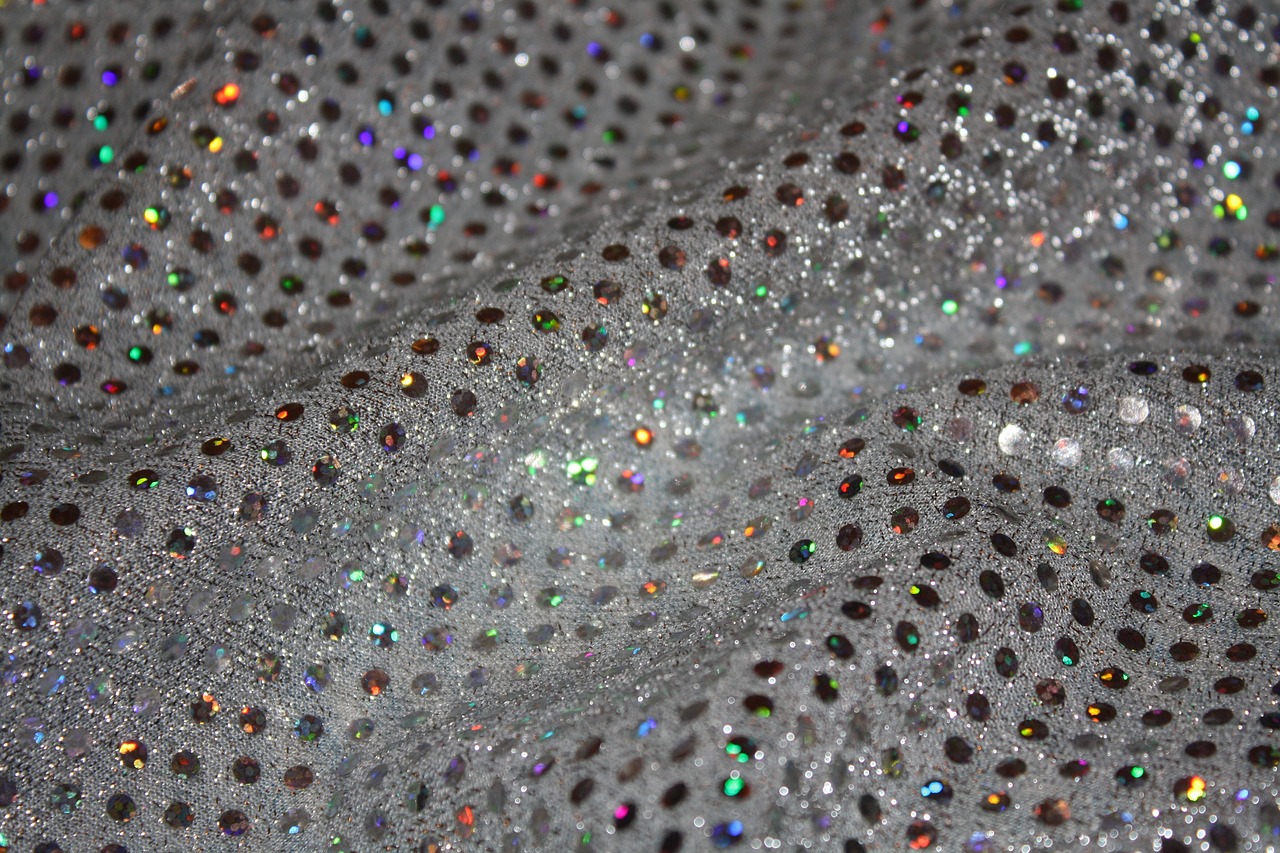
Understanding Eco-Friendly Fabrics
Eco-friendly fabrics are more than just a trend; they represent a significant shift towards sustainability in the textile industry. But what exactly qualifies as eco-friendly? In simple terms, eco-friendly fabrics are made from sustainable materials that are produced with minimal environmental impact. This means that the cultivation, processing, and manufacturing of these fabrics prioritize the health of our planet. Think of it as choosing to wear a badge of honor for the Earth, knowing that your clothing choices contribute to a healthier environment.
One of the key benefits of choosing eco-friendly fabrics is their ability to reduce pollution and conserve natural resources. Traditional fabric production often involves harmful chemicals and excessive water usage, which can lead to soil degradation and water scarcity. In contrast, eco-friendly options like organic cotton, hemp, and Tencel are grown using methods that not only protect the environment but also promote biodiversity. For instance, organic cotton is cultivated without synthetic pesticides or fertilizers, ensuring that the soil remains fertile and free from toxins.
Moreover, opting for sustainable fabrics can also have a positive impact on your health. Many conventional fabrics are treated with chemicals that can irritate the skin or cause allergic reactions. By choosing eco-friendly alternatives, you're not just making a choice for the planet but also for your personal well-being. Imagine slipping into a soft organic cotton shirt that feels good against your skin and is gentle on the environment. It’s a win-win situation!
Additionally, eco-friendly fabrics often support ethical labor practices. Many sustainable fabric producers emphasize fair wages and safe working conditions for their workers, which adds another layer of responsibility to your choices. When you sew with these fabrics, you’re not just creating beautiful garments; you’re also supporting a movement that values both people and the planet.
In summary, understanding eco-friendly fabrics goes beyond knowing their materials. It involves recognizing the broader implications of your fabric choices on the environment, health, and social equity. By embracing these sustainable options, you can enhance your sewing projects while promoting a culture of environmental responsibility. So, the next time you’re browsing for fabric, consider the impact of your choice and remember that every stitch can contribute to a more sustainable future.
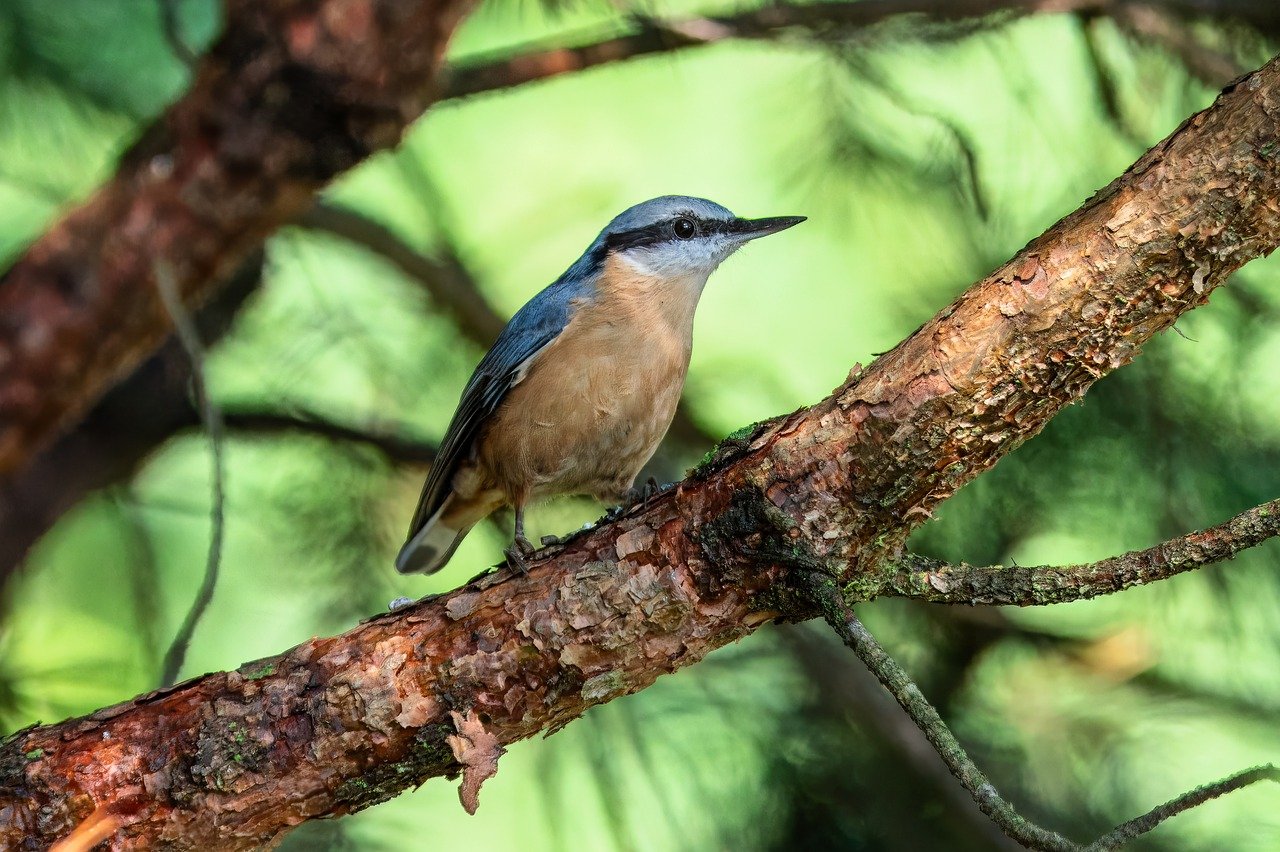
Types of Eco-Friendly Fabrics
When it comes to eco-friendly fabrics, the variety is as rich and vibrant as the colors they come in. Choosing sustainable materials for your sewing projects is not just a trend; it's a commitment to preserving our planet for future generations. From organic cotton to hemp and Tencel, each fabric type has unique properties that can enhance your creations while minimizing environmental impact. Let's dive into some of the most popular eco-friendly fabrics, exploring their characteristics, benefits, and ideal uses in your sewing endeavors.
First up is organic cotton, a fabric that has gained immense popularity among eco-conscious consumers. Grown without the use of harmful pesticides or synthetic fertilizers, organic cotton is not only better for the environment but also for the farmers who cultivate it. Imagine wrapping yourself in a fabric that feels soft against your skin while knowing it has been grown in a way that respects nature. Organic cotton's benefits extend beyond comfort; it promotes sustainable agricultural practices that contribute to healthier ecosystems.
The advantages of organic cotton are numerous and compelling. By choosing organic cotton, you are not only reducing your environmental impact but also supporting farmers who practice sustainable agriculture. Some key benefits include:
- Reduced Environmental Impact: Organic farming methods improve soil health and biodiversity.
- Better Health for Farmers: Without exposure to toxic chemicals, farmers can work in safer conditions.
- Lower Carbon Footprint: Organic cotton cultivation typically requires less energy and water.
Understanding these benefits empowers you to make informed fabric choices that align with your values.
Organic cotton is incredibly versatile, making it an ideal choice for various sewing projects. Whether you're crafting clothing, home décor items, or accessories, this fabric can do it all. Imagine sewing up a cozy organic cotton blanket that not only keeps you warm but also supports sustainable practices. Here are some creative project ideas:
- Apparel: From t-shirts to dresses, organic cotton clothing is breathable and comfortable.
- Home Décor: Create beautiful curtains, cushion covers, or quilts that are eco-friendly.
- Accessories: Think tote bags or reusable produce bags that make a statement while being sustainable.
With organic cotton, your sewing projects can reflect your commitment to sustainability without sacrificing style.
Next on our list is hemp fabric, a powerhouse of strength and durability. Hemp is one of the most sustainable crops available, requiring minimal water and no pesticides to thrive. This resilient plant not only produces a fabric that is tough and long-lasting but also contributes positively to the environment. Picture a fabric that not only stands the test of time but also helps to rejuvenate the soil it grows in.
Hemp fabric's environmental benefits are hard to ignore. Its natural pest resistance means that hemp plants can thrive without the need for chemical interventions. This characteristic makes it an excellent choice for eco-conscious sewists who want to create high-quality items without contributing to pollution. Additionally, hemp fabric becomes softer with each wash, making it more comfortable over time.
Incorporating hemp into your sewing projects comes with a plethora of benefits:
- Strength and Durability: Hemp fabric is known for its robustness, making it ideal for heavy-duty projects.
- Low Water Usage: Hemp requires significantly less water than cotton, making it a more sustainable option.
- Natural Pest Resistance: This means fewer chemicals in the farming process and a healthier planet.
Choosing hemp fabric not only enhances the quality of your projects but also supports an eco-friendly lifestyle.
Hemp fabric is perfect for a variety of sewing applications, thanks to its unique properties. Here are some ideas for how you can incorporate hemp into your projects:
- Workwear: Its durability makes it ideal for sturdy clothing like aprons or overalls.
- Accessories: Think bags or hats that can withstand daily wear and tear.
- Home Textiles: Hemp can be used for everything from tablecloths to upholstery.
With hemp fabric, you're not just sewing; you're making a statement about sustainability and quality.
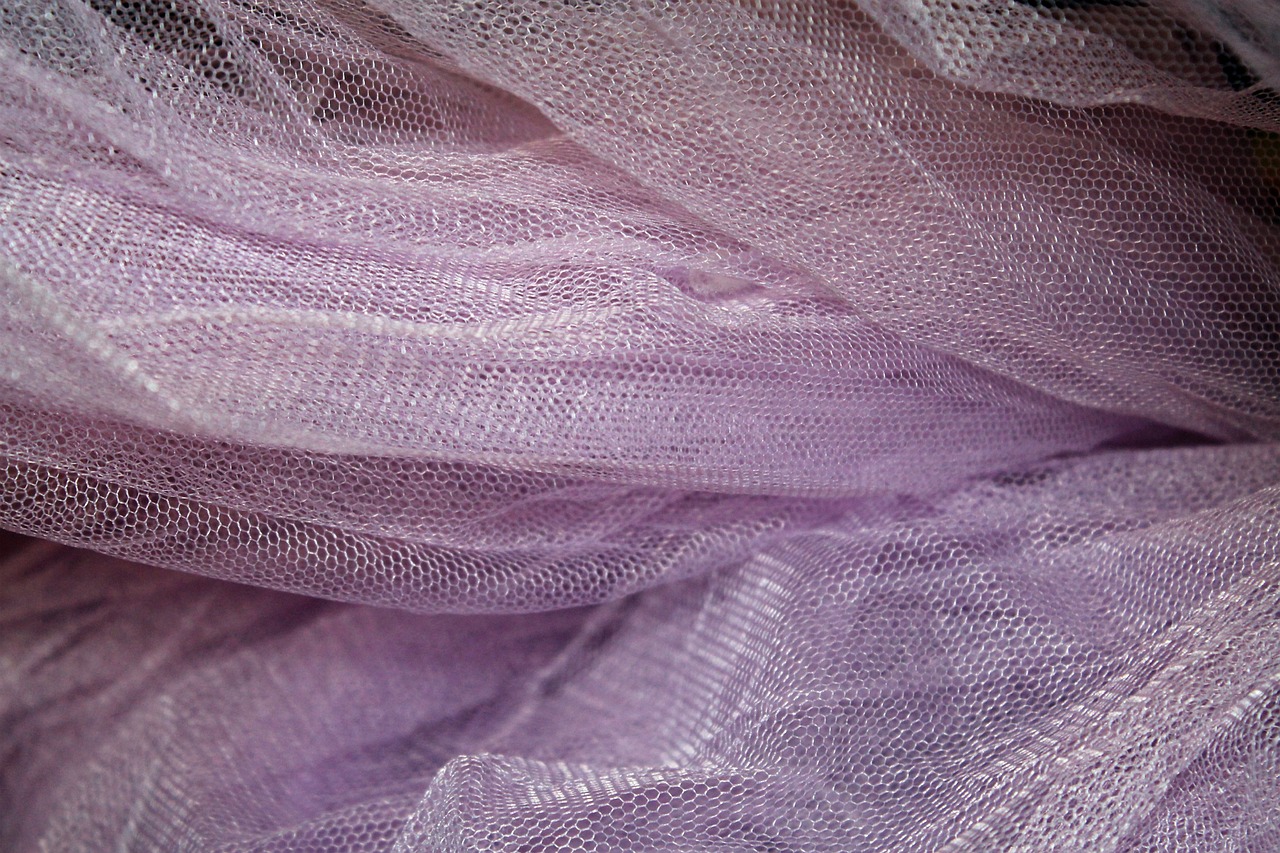
Organic Cotton
When it comes to choosing fabrics for your sewing projects, stands out as a top contender. This remarkable fabric is not just soft and comfortable; it's also a champion of sustainability. Grown without the use of harmful pesticides or synthetic fertilizers, organic cotton is cultivated in a way that protects the environment and promotes biodiversity. Imagine a field of cotton plants thriving under the sun, nourished by natural compost and rainwater, rather than being doused in chemicals. This is the beauty of organic cotton—it’s not just a fabric; it’s a commitment to a healthier planet.
One of the most appealing aspects of organic cotton is its softness. It feels gentle against the skin, making it perfect for everything from baby clothes to cozy t-shirts. But don't let that softness fool you; organic cotton is also incredibly durable. It can withstand the rigors of daily wear and tear, ensuring that your sewing projects not only look great but last longer. In fact, many sewists find that garments made from organic cotton age beautifully, developing a unique character over time.
Moreover, choosing organic cotton means supporting sustainable agriculture practices. By opting for this fabric, you're contributing to a system that prioritizes soil health, water conservation, and the well-being of farmers. Unlike conventional cotton farming, which can lead to soil degradation and water pollution, organic cotton farming encourages the use of crop rotation and organic fertilizers. This not only enhances the quality of the soil but also helps in maintaining the natural ecosystem.
In your sewing endeavors, organic cotton can be used in a myriad of creative ways. Whether you're crafting stylish clothing, creating beautiful home décor items, or even making eco-friendly gifts, this versatile fabric has you covered. Here are some popular applications:
- Clothing: From dresses to activewear, organic cotton is perfect for any wardrobe staple.
- Home Décor: Think curtains, pillow covers, and tablecloths that not only look good but are also eco-friendly.
- Accessories: Bags, hats, and even toys can be made from this sustainable fabric.
In conclusion, organic cotton is more than just a fabric; it represents a lifestyle choice that aligns with environmental stewardship. By incorporating organic cotton into your sewing projects, you’re not only creating beautiful items but also making a positive impact on the planet. So, the next time you're at the fabric store, consider reaching for organic cotton. Your sewing machine will thank you, and so will Mother Earth!
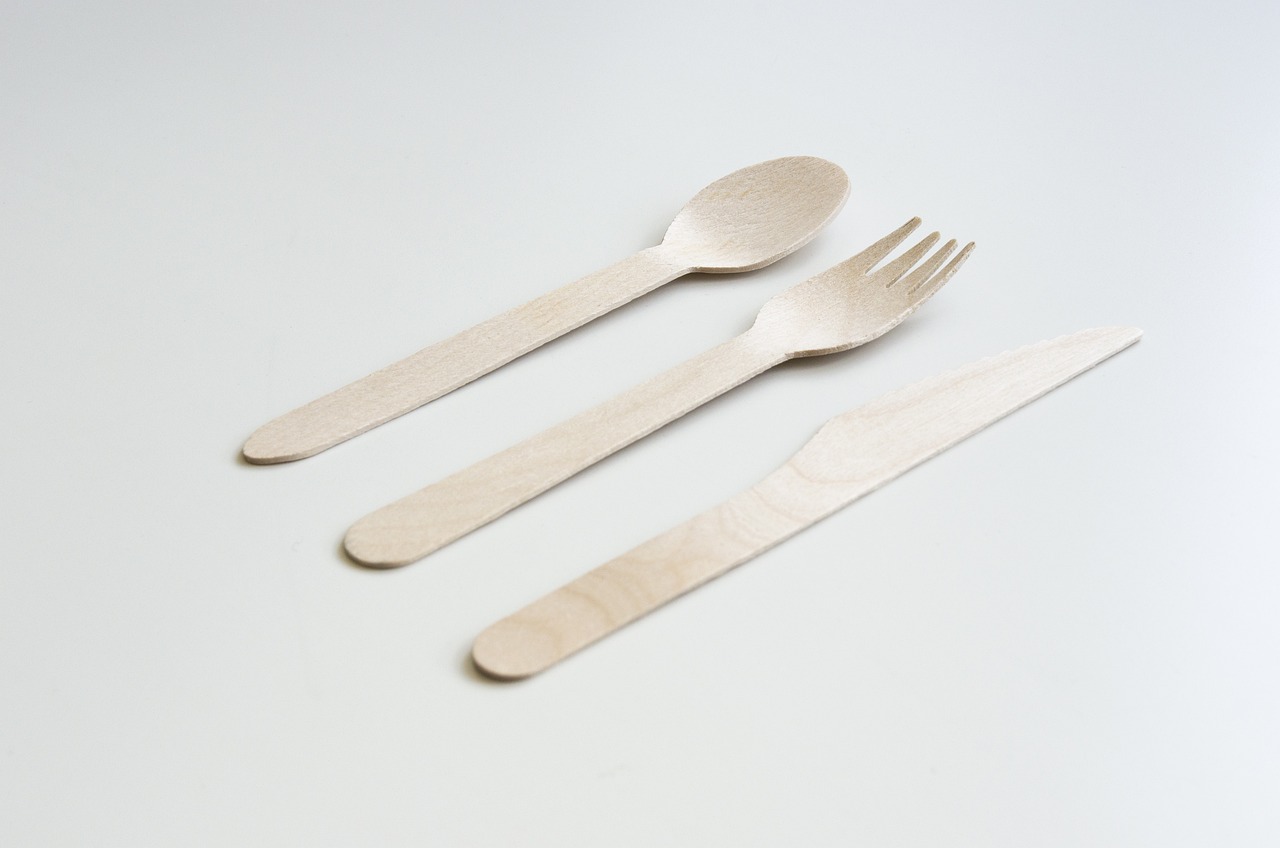
Benefits of Organic Cotton
Organic cotton is not just a fabric; it’s a movement towards a healthier planet and a more sustainable future. One of the most significant benefits of organic cotton is its environmental impact. Unlike conventional cotton, which relies heavily on harmful pesticides and synthetic fertilizers, organic cotton is grown using natural methods. This means that the soil remains rich and fertile, promoting biodiversity and reducing the risk of water contamination. By choosing organic cotton, you are actively participating in a system that nurtures the earth rather than depleting it.
Moreover, organic cotton is gentler on your skin. Since it’s grown without toxic chemicals, it’s less likely to cause irritations or allergic reactions, making it an excellent choice for sensitive skin. Whether you’re sewing clothing for yourself or your family, you can feel good knowing that organic cotton is a safe and comfortable option.
Another remarkable benefit is the support it provides to farmers. Organic farming practices often lead to better health outcomes for farmers and their communities. By avoiding harmful chemicals, farmers reduce their exposure to toxic substances, which can lead to chronic health issues. This creates a healthier working environment and promotes sustainable agricultural practices that benefit everyone involved in the supply chain.
Additionally, organic cotton has a lower carbon footprint compared to its conventional counterpart. The methods used in organic farming require less energy and resources, contributing to a decrease in greenhouse gas emissions. By choosing organic cotton, you’re not just making a fabric choice; you’re making a statement about your commitment to the environment.
In summary, the benefits of organic cotton are numerous and impactful:
- Environmental sustainability: Reduces pollution and promotes biodiversity.
- Healthier for consumers: Safe for sensitive skin and free from harmful chemicals.
- Support for farmers: Promotes better health and working conditions.
- Lower carbon footprint: Contributes to a reduction in greenhouse gas emissions.
So, the next time you embark on a sewing project, consider using organic cotton. Not only will you be creating something beautiful, but you'll also be making a positive impact on the world around you.
What makes organic cotton different from regular cotton?
Organic cotton is grown without synthetic pesticides and fertilizers, making it more environmentally friendly and safer for consumers.
Is organic cotton more expensive than regular cotton?
Yes, organic cotton can be more expensive due to the labor-intensive farming practices and lower yields, but many believe the benefits outweigh the costs.
Can I find organic cotton in different colors and patterns?
Absolutely! Organic cotton is available in a wide variety of colors and patterns, especially when using sustainable dyes.
How can I ensure that the cotton I buy is truly organic?
Look for certifications such as the Global Organic Textile Standard (GOTS) or the Organic Content Standard (OCS) on fabric labels.
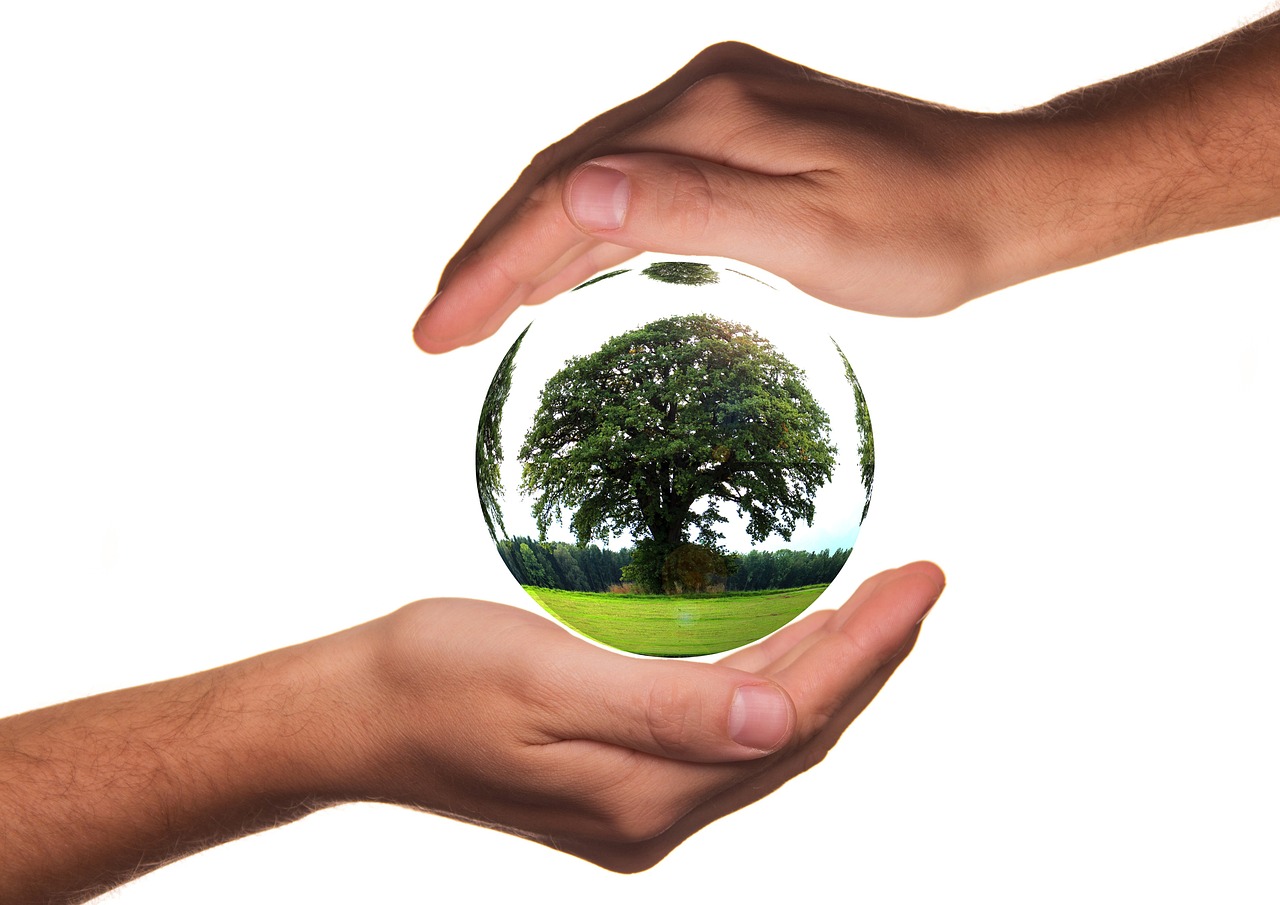
Uses of Organic Cotton in Sewing
Organic cotton is a true gem in the world of sustainable fabrics, offering versatility that can elevate your sewing projects to new heights. Whether you’re a seasoned sewist or just starting out, the uses of organic cotton are practically limitless. Imagine crafting a stunning summer dress that not only feels soft against your skin but also promotes eco-friendly practices. With its breathable nature, organic cotton is perfect for clothing items, making it a popular choice for everything from t-shirts to children's wear. You can create comfortable, stylish outfits without compromising on sustainability.
But clothing isn't the only area where organic cotton shines. This fabric is also fantastic for home décor projects. Think about the cozy feel of organic cotton curtains gently swaying in the breeze or the inviting touch of organic cotton cushions adorning your living room. These items not only add a touch of elegance to your home but also make a statement about your commitment to the environment. You can even dive into quilting with organic cotton fabrics, creating beautiful quilts that are both eco-friendly and aesthetically pleasing.
In addition to clothing and home décor, organic cotton is an excellent choice for craft projects. Whether you're making reusable shopping bags, tote bags, or even baby items like blankets and bibs, organic cotton provides a safe and sustainable option. Its durability ensures that these items will last, reducing the need for frequent replacements. Plus, you can feel good knowing that your creations are made from materials that are gentle on the planet.
Here’s a quick overview of some creative applications for organic cotton:
- Apparel: Dresses, shirts, and activewear
- Home Textiles: Curtains, pillowcases, and bed linens
- Crafts: Reusable bags, toys, and baby accessories
Overall, the uses of organic cotton in sewing are as diverse as your imagination allows. By choosing organic cotton, you not only create beautiful, functional items but also contribute to a healthier planet. So, why not start your next sewing project with this incredible fabric? You'll be amazed at how organic cotton can transform your creations while keeping your conscience clear.
Q: What is organic cotton?
A: Organic cotton is cotton that is grown without the use of harmful pesticides or synthetic fertilizers, promoting healthier farming practices.
Q: Is organic cotton more expensive than conventional cotton?
A: While organic cotton can be slightly more expensive due to its sustainable farming practices, many find the benefits to be worth the investment.
Q: Can I find organic cotton in various colors and patterns?
A: Yes! Organic cotton is available in a wide range of colors and patterns, allowing for creative expression in your sewing projects.
Q: How do I care for organic cotton fabrics?
A: Organic cotton can typically be washed in cold water and tumble dried on low heat. Always check the care instructions for specific items.
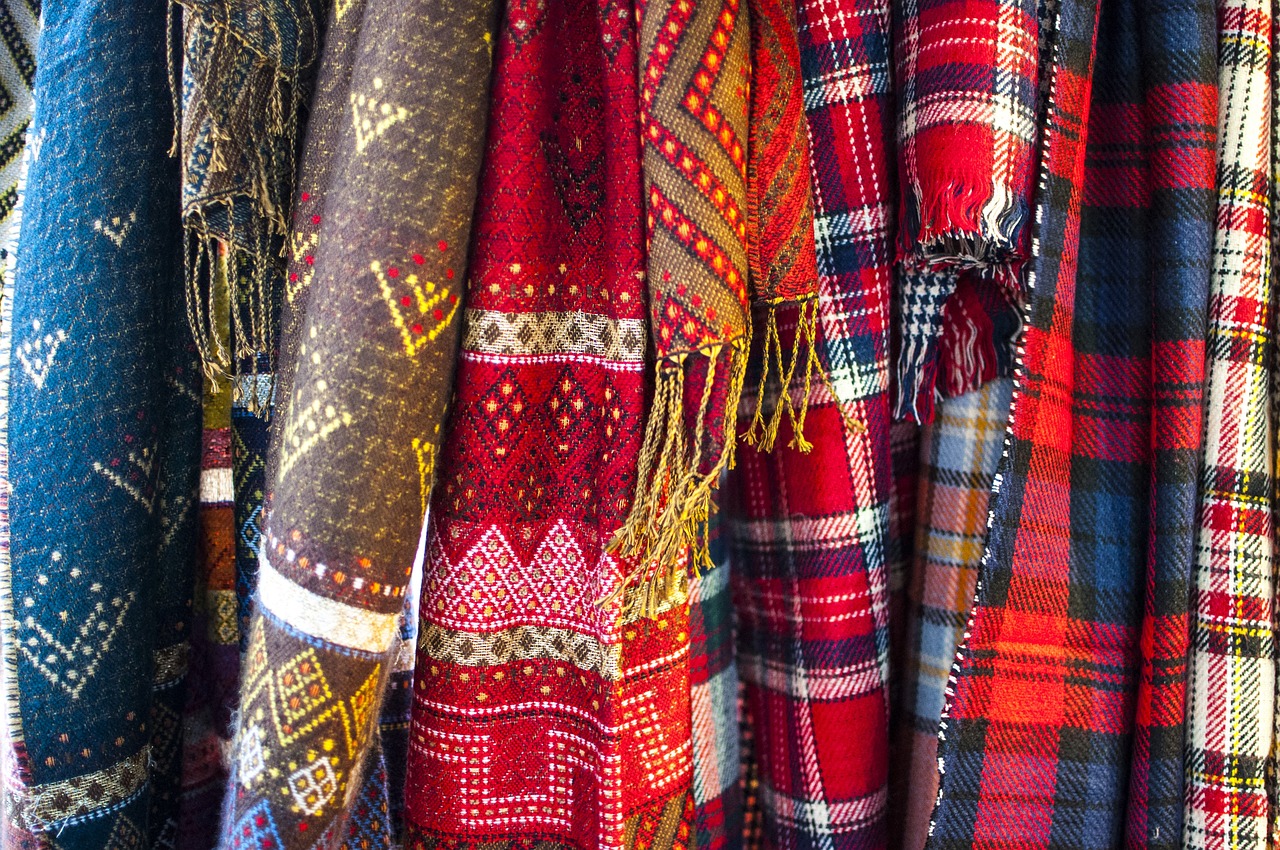
Hemp Fabric
Hemp fabric is a remarkable choice for those who are passionate about sustainability and eco-friendliness. Known for its incredible strength and durability, hemp has been used in textiles for thousands of years. Unlike conventional cotton, which can be quite resource-intensive, hemp requires significantly less water and no harmful pesticides to grow. This makes it a champion of sustainable agriculture. Imagine a fabric that not only lasts longer but also helps reduce the environmental footprint of your sewing projects—this is the magic of hemp!
One of the standout features of hemp fabric is its natural resistance to pests. This means that hemp plants can thrive without the need for chemical pesticides, which can be harmful to both the environment and human health. The cultivation of hemp contributes to soil health, as it can help to replenish nutrients in the ground, making it a wise choice for eco-conscious sewists. When you choose hemp, you're not just selecting a fabric; you're supporting a more sustainable agricultural practice.
Furthermore, hemp fabric is incredibly versatile. It can be woven into various textures and weights, making it suitable for a wide range of sewing projects. Whether you're looking to make sturdy bags, breathable clothing, or even home textiles like curtains and tablecloths, hemp fabric can accommodate your needs. Its natural properties also mean that it becomes softer with each wash, offering a comfortable feel without sacrificing durability. Picture a rugged tote bag made from hemp that not only looks great but also withstands the test of time—it's a win-win!
To give you a clearer picture of the benefits of hemp fabric, let’s take a look at a comparison table:
| Feature | Hemp Fabric | Conventional Cotton |
|---|---|---|
| Water Usage | Low | High |
| Pesticide Requirement | None | High |
| Durability | Very High | Medium |
| Softness Over Time | Increases | Stable |
In summary, hemp fabric is not just a fabric; it's a lifestyle choice. By incorporating hemp into your sewing projects, you are making a statement about your commitment to sustainability. Whether you're creating a stylish garment or a practical accessory, hemp fabric offers a blend of durability and eco-friendliness that is hard to beat. So next time you're planning a sewing project, consider reaching for hemp—your planet will thank you!
Q: Is hemp fabric comfortable to wear?
A: Yes! Hemp fabric becomes softer with each wash, making it very comfortable for clothing.
Q: Can hemp fabric be dyed?
A: Absolutely! Hemp fabric can be dyed using both natural and low-impact dyes, allowing for creative expression in your projects.
Q: Is hemp fabric environmentally friendly?
A: Yes, hemp is one of the most sustainable fabrics available, requiring less water and no pesticides, which benefits the environment.
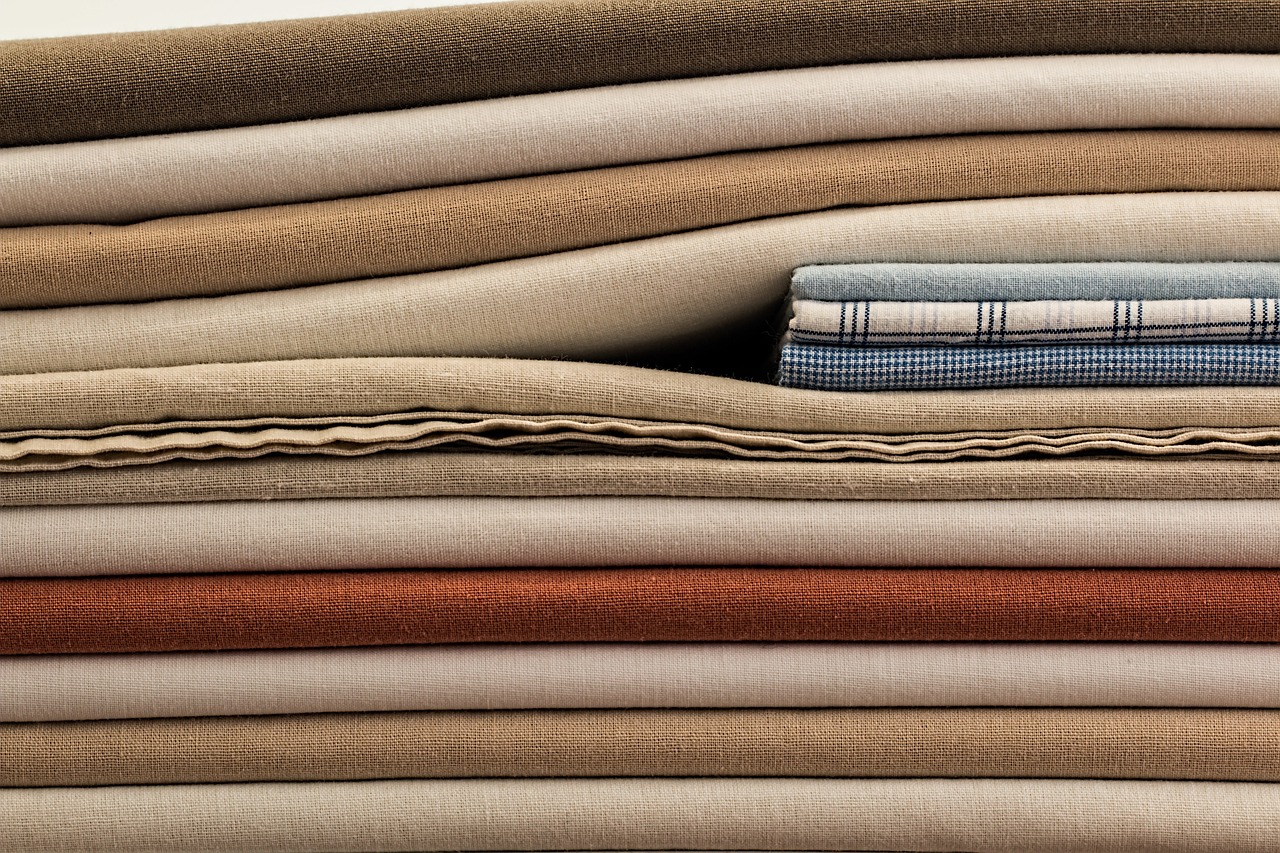
Choosing Sustainable Dyes
When embarking on your sewing journey, it's crucial to consider not just the fabrics you choose, but also the dyes that bring those fabrics to life. The dyeing process can have a significant impact on the environment, often involving toxic chemicals that can pollute waterways and harm ecosystems. By opting for sustainable dyes, you can ensure that your creative endeavors are not only beautiful but also environmentally responsible. So, what exactly makes a dye sustainable? Generally, sustainable dyes are those that minimize pollution, use renewable resources, and have a lower overall impact on the environment.
One of the most appealing aspects of sustainable dyes is their ability to enhance the natural beauty of eco-friendly fabrics. For instance, natural dyes derived from plants, minerals, and even insects can produce stunning colors that are rich and vibrant. These dyes not only offer a unique aesthetic but also connect your projects to nature in a meaningful way. Imagine sewing a dress dyed with indigo from natural sources, giving your garment a story that resonates with the earth.
In addition to natural dyes, there are also low-impact dyes that have been formulated to reduce environmental harm. These dyes often require less water during the dyeing process and are free from harmful chemicals. They can be used on a variety of fabrics while still providing a wide range of colors. By choosing low-impact dyes, you can create beautiful pieces without compromising your commitment to sustainability.
Here’s a quick comparison of natural dyes and low-impact dyes:
| Type of Dye | Source | Environmental Impact | Color Range |
|---|---|---|---|
| Natural Dyes | Plants, minerals, insects | Generally low; varies by source | Varied, often muted tones |
| Low-Impact Dyes | Synthetic but eco-friendly | Low; designed to minimize harm | Wide range, vibrant colors |
Using sustainable dyes not only benefits the environment but also adds a personal touch to your sewing projects. Imagine the satisfaction of knowing that your fabric is dyed using methods that are kind to the planet. It's not just about the final product; it's about the entire journey from fabric selection to dyeing and sewing. So, whether you're creating a cozy quilt or a stylish garment, choosing sustainable dyes is a step in the right direction.
- What are sustainable dyes? Sustainable dyes are those that are made from renewable resources and minimize environmental impact during production and application.
- Can I use natural dyes on all types of fabric? While many natural dyes work well on cotton and other natural fibers, some may not adhere well to synthetic fabrics.
- Are low-impact dyes safe to use? Yes, low-impact dyes are designed to be safer for both the environment and the person using them, often being free from harmful chemicals.
- How can I ensure my dyeing process is sustainable? Choose natural or low-impact dyes, use minimal water, and dispose of any waste responsibly.
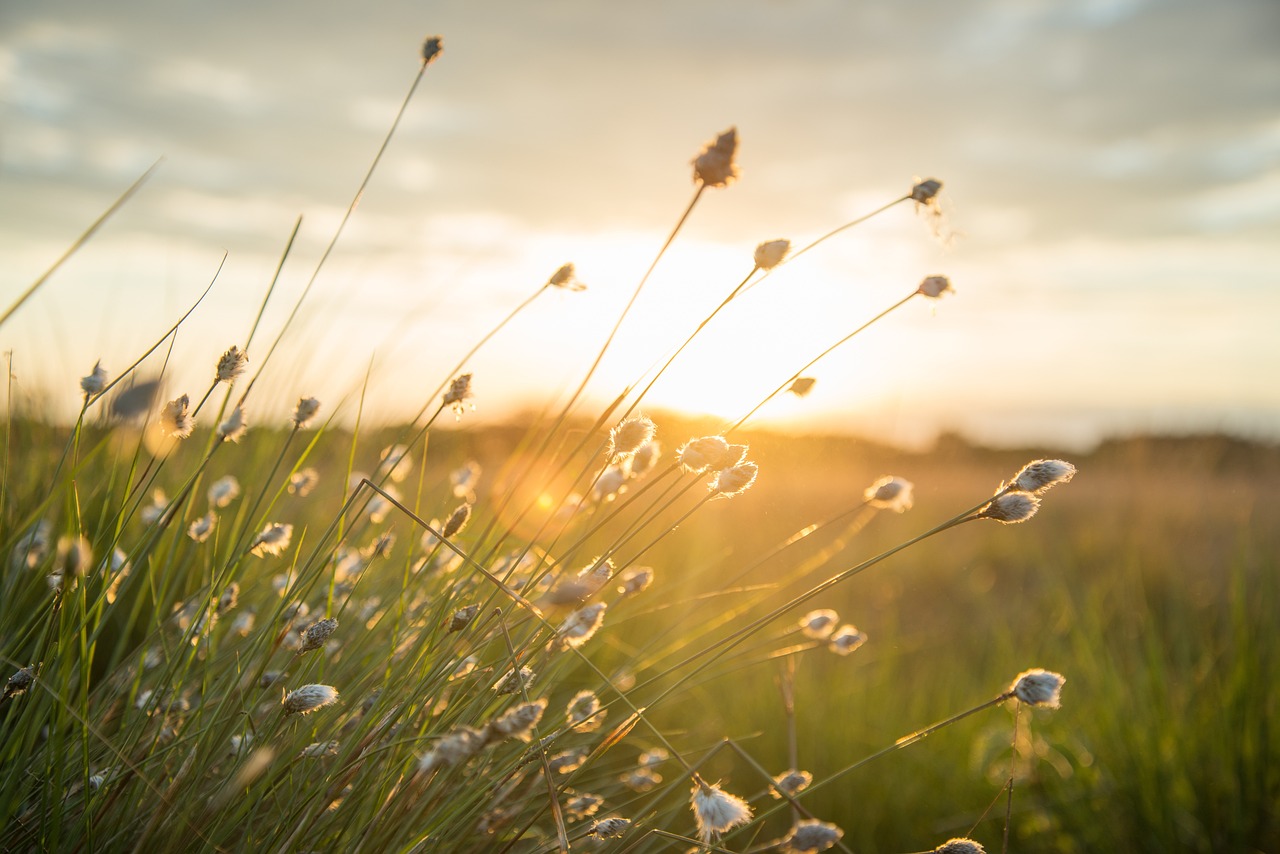
Natural Dyes
When it comes to adding color to your eco-friendly sewing projects, are a fantastic option that not only beautifies your fabrics but also aligns with sustainable practices. Derived from plants, minerals, and insects, these dyes offer a rich palette of colors that can transform your creations into unique pieces of art. Imagine wrapping yourself in a garment dyed with vibrant indigo from the leaves of the indigo plant or wearing a scarf tinted with the soft hues of madder root. The beauty of natural dyes is that they tell a story, connecting you to the earth and its resources.
Using natural dyes in your projects isn't just about aesthetics; it's also about making a conscious choice for the environment. Unlike synthetic dyes, which can be laden with harmful chemicals, natural dyes are typically biodegradable and less toxic. This means that when you wash your dyed fabric, fewer pollutants are released into the water system, leading to a healthier planet. Additionally, many natural dye sources can be grown in your own garden, making the dyeing process even more sustainable. For instance, marigolds, onion skins, and avocado pits can all be used to create beautiful shades without the need for industrial processes.
However, the journey with natural dyes is not without its challenges. The colorfastness of natural dyes can vary, meaning that some colors may fade more quickly than their synthetic counterparts. To ensure your colors last, it’s essential to use a mordant, a substance that helps fix the dye to the fabric. Common mordants include alum, iron, and cream of tartar. While these can also be sourced naturally, it’s important to handle them with care and understand their implications for the dyeing process.
Here’s a quick overview of some popular natural dye sources and the colors they produce:
| Dye Source | Color Produced |
|---|---|
| Indigo | Deep blue |
| Madder Root | Red to orange |
| Turmeric | Bright yellow |
| Avocado Pits | Soft pink to peach |
| Onion Skins | Golden yellow to brown |
To get started with natural dyeing, you'll need a few basic supplies: the fabric you wish to dye, your chosen dye source, water, and a mordant. The process typically involves simmering your dye source in water to extract the color, preparing your fabric with a mordant, and then soaking the fabric in the dye bath. The results can be stunning and lend a personal touch to your sewing projects. Remember, the beauty of natural dyes lies in their unpredictability; you might end up with a shade that’s completely different from what you envisioned, which adds to the charm of handmade items.
In conclusion, natural dyes provide a beautiful and sustainable way to enhance your eco-friendly sewing projects. By choosing to dye with natural materials, you're not only creating vibrant colors but also contributing to a healthier planet. So, why not dive into the world of natural dyes and see where your creativity takes you? The results may surprise you!
- Are natural dyes safe for all fabrics? - Most natural dyes work well on natural fibers like cotton, silk, and wool, but it's essential to test on a small swatch first.
- How do I ensure my natural dyes are colorfast? - Using a mordant is crucial for fixing the dye to the fabric. Research the best mordants for the dye you choose.
- Can I dye synthetic fabrics with natural dyes? - While it's possible, synthetic fibers often require different techniques and may not hold the dye as well as natural fibers.
- Where can I find natural dye sources? - Many plants used for dyeing can be found in gardens or local markets, and there are also online suppliers specializing in natural dyes.
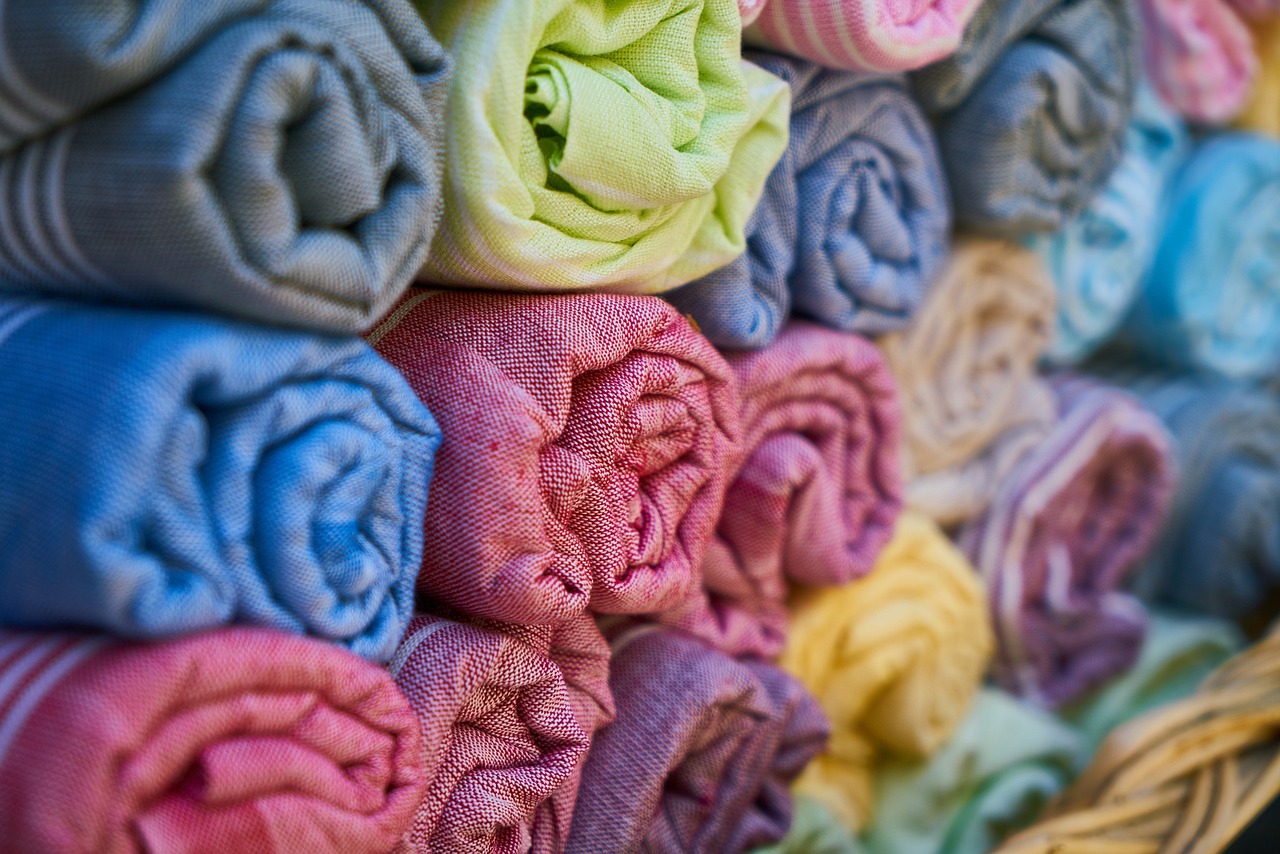
Low-Impact Dyes
When it comes to sewing with eco-friendly fabrics, choosing the right dyes can make a world of difference. are specifically designed to minimize environmental harm while still providing vibrant colors that can make your projects pop. But what exactly are low-impact dyes, and why should you consider them for your sewing endeavors? Let's dive in!
Low-impact dyes are typically made from natural or synthetic sources that require less water and energy during the dyeing process. Unlike conventional dyes, which can be laden with harmful chemicals, low-impact options offer a more sustainable approach. This means they not only reduce pollution but also contribute to the overall health of our planet. Imagine dyeing your fabric without leaving a heavy footprint on the Earth—sounds appealing, right?
One of the key benefits of low-impact dyes is their colorfastness. These dyes are designed to adhere well to fabrics, ensuring that your creations maintain their vibrant hues even after multiple washes. This durability is essential for those who want their sewing projects to stand the test of time. Additionally, low-impact dyes often come in a wide range of colors, so you can let your creativity run wild without compromising your commitment to sustainability.
Another fascinating aspect is the application methods. Low-impact dyes can be applied in various ways, including:
- Cold dyeing: This method allows you to dye fabrics at lower temperatures, saving energy and reducing your carbon footprint.
- Shibori techniques: This traditional Japanese method of dyeing involves folding, twisting, or bunching fabric to create unique patterns while using low-impact dyes.
- Direct application: You can apply dyes directly to the fabric using brushes or stamps, allowing for creative designs and patterns.
By incorporating low-impact dyes into your sewing projects, you're not just enhancing the beauty of your fabrics; you're also making a statement about your commitment to sustainability. It's like dressing your creations in a cloak of environmental responsibility. Plus, many low-impact dyes are derived from natural sources, such as plants and minerals, which means you can feel good about the materials you’re using.
In summary, choosing low-impact dyes for your sewing projects is a smart and stylish choice. Not only do they help protect the environment, but they also allow for a creative expression that’s both beautiful and meaningful. So next time you're planning a sewing project, consider reaching for those low-impact dyes and watch your fabric transform into a masterpiece that reflects your values.
Q1: What are low-impact dyes made from?
A1: Low-impact dyes can be made from both natural and synthetic sources, designed to minimize environmental impact during the dyeing process.
Q2: Are low-impact dyes safe for all fabrics?
A2: Yes, low-impact dyes can be used on a variety of fabrics, including cotton, linen, and blends. However, it's always best to check the manufacturer's recommendations.
Q3: How can I apply low-impact dyes to my fabric?
A3: There are several methods, including cold dyeing, shibori techniques, and direct application. Each technique offers unique results and allows for creative expression.
Q4: Do low-impact dyes fade over time?
A4: While low-impact dyes are designed for colorfastness, all dyes can fade over time with washing and exposure to sunlight. However, low-impact dyes tend to be more durable than conventional options.
Frequently Asked Questions
- What are eco-friendly fabrics?
Eco-friendly fabrics are materials made from sustainable resources that have a lower impact on the environment. They are produced without harmful chemicals and often come from renewable sources, making them a great choice for environmentally conscious consumers.
- Why should I choose organic cotton over conventional cotton?
Choosing organic cotton means supporting sustainable farming practices that avoid toxic pesticides and fertilizers. This not only benefits the environment but also promotes healthier conditions for farmers and workers. Plus, organic cotton is often softer and more durable, enhancing your sewing projects!
- What are the benefits of using hemp fabric?
Hemp fabric is incredibly strong and durable, making it perfect for a variety of sewing projects. It requires less water to grow and is naturally resistant to pests, reducing the need for chemical pesticides. This makes hemp a fantastic eco-friendly option that contributes to a healthier planet.
- Can I use natural dyes for my sewing projects?
Absolutely! Natural dyes, derived from plants and minerals, are a sustainable alternative to synthetic dyes. They can add unique colors and textures to your fabrics while minimizing environmental harm. Plus, experimenting with natural dyes can be a fun and creative part of your sewing journey!
- What are low-impact dyes?
Low-impact dyes are specially formulated to reduce pollution during the dyeing process. They require less water and energy to produce, making them a more sustainable choice. Using low-impact dyes can enhance the beauty of your eco-friendly fabrics while being kinder to the environment.
- How can I incorporate eco-friendly fabrics into my sewing projects?
There are countless ways to use eco-friendly fabrics in your sewing! From clothing and accessories to home décor items like curtains and pillow covers, the possibilities are endless. Get creative and let your imagination guide you in making sustainable choices for your projects!



















